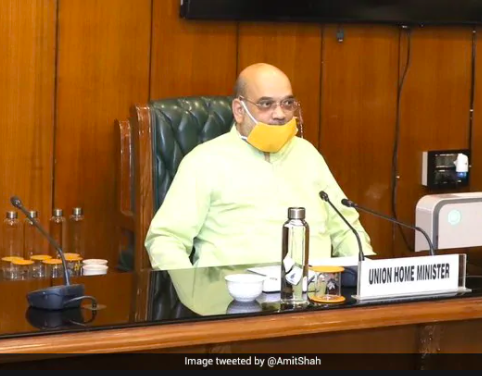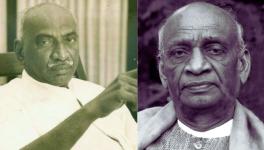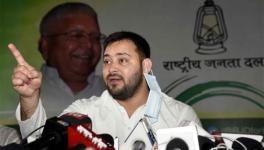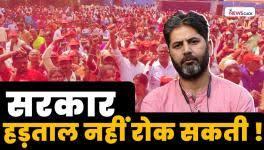Amit Shah Accepts Government Failed on COVID-19, Descends to What-Aboutery

We know that the Modi government has failed on the COVID epidemic front when Amit Shah accepts “mistakes” and “shortfalls”, and then immediately descends to what-aboutery: “What did the Opposition do?” It is clear that the Central Government’s ill-planned and ill-executed lockdown, even with the enormous pain it inflicted on the working people, failed to control the epidemic. And with the partial lifting of the lockdown, we are seeing a surge in numbers.
When we look at an epidemic, we need to look at not just the total infected or dead, but the speed with which the infections are spreading. India, jointly with Russia, now has the third highest number of daily new cases, below only Brazil and the US. In terms of daily deaths, India is again the third highest, below only Brazil and the US.
The number of deaths indicate the failure of the health system to cope with the rising number of seriously ill patients. This is the crisis that is already staring us in the face with sick people dying outside hospitals, unable to find beds.
The Modi government has presented some modelling exercises to try and convince the people that its botched lockdown still saved lakhs of lives. This is an elementary failure of understanding epidemics and lockdowns. A lockdown postpones the spread of infections and does not avoid them. It buys time to put various systems in place: contact tracing quarantine facilities, temporary hospitals, and strengthening critical care facilities such as increasing ICU beds, oxygen support systems and ventilators.
Three major public health organisations – the Indian Public Health Association (IPHA), the Indian Association of Preventive and Social Medicine (IAPSM) and the Indian Association of Epidemiologists (IAE) in a statement said, “...community transmission is already well-established across large sections or sub-populations in the country.” The public health organisations also added, “India’s nationwide ‘lockdown’ from March 25, 2020 till May 30, 2020 has been one of the most stringent; and yet Covid-19 cases have increased exponentially through this phase.” They attributed it to incoherent and often rapidly shifting strategies and policies especially at the national level.
With this high number of cases, we are obviously in the community phase of transmission that the Modi government still refuses to accept. We have been in this transmission phase for weeks in cities like Mumbai, Delhi, Ahmedabad, Indore, Chennai and others. By denying that we are in community phase of transmission, the Government and ICMR is restricting the testing of people. Is the lack of testing kits the real reason why the government is denying community transmission?
Apart from the number of new infections, the other worrying issue is the sharp rise in the number of positive cases among those tested. A month back, Delhi had 8.1% positive cases among those tested; today the figure is three times that, it is 26.2%. Similarly, Maharashtra had 16.5% positives among the those tested, today it is 22.8%. Mumbai shows even worse figures, as do some of the districts of Delhi. It shows is that in places where the Covid epidemic had started earlier, the number of tests are just not enough for the scale of new infections that we are seeing currently. Either we just do not have the required number of test kits, reagents and testing equipment; or we are busy hiding the true figures.
| Delhi | 8.1 | 26.2 |
| Maharashtra | 16.5 | 22.8 |
| Gujarat | 7.1 | 8.1 |
| Tamilnadu | 5.4 | 8.1 |
(Calculations using data from www.covid19india.org and Ministry of Health and Family Welfare)
Some state governments are also adding to the problem by restricting Covid tests even further. Recently, the Delhi government issued a show cause notice on 8 private labs including Gangaram Charitable Hospital from performing Covid tests on asymptomatic cases. The Delhi government’s main difference with the ICMR guidance is that while ICMR allows all asymptomatic direct contacts and high risk contacts to be tested, the Delhi government has removed testing for all asymptomatic cases. For high risk patients, the Delhi government has limited the high risk contacts to be tested to only those with co-morbidities, and even those in a restricted list of co-morbidities. The Lt. Governor of Delhi has over ruled the Delhi government’s restrictions on testing, but the Kejriwal government has yet to explain its rationale in limiting testing. With the ICMR in denial on community transmission, Covid tests can be performed only for those who have come in contact with Covid patients or those who are high risk patients. We are now aware that a very large number of people who get infected do not show symptoms. Even those who show symptoms, start infecting others even before they show the symptoms. This makes it important that during the community transmission phase, we conduct widespread testing. Based on current figures, our test numbers are 3.5, and well below that of countries like Iran:13, Turkey: 28 or Thailand: 6.7, not to talk of China, South Korea, Malaysia or EU countries.
Earlier, we had seen markedly different figures of dead as released by the Kejriwal government and that from the records of cemeteries and burial grounds. Is curbing Covid tests Delhi government’s way of hiding the true figures of those infected? This is the route that the Gujarat government had followed earlier, testing less number of people and hide the true Covid figures. Of course, this can be maintained only for some time as the number of dead are more difficult to hide. It was the higher number of dead compared to those infected that gave the Gujarat game away.
What should be the scale of testing in the country? To simply keep pace with the number of new infections, we need increase our tests by at least 50,000-100,000 every day and not every week that we are doing now. This is the job that the central government should be doing, one that should be on top of the Atmanirbhar Bharat list. Identify manufacturers, help them procure equipment and materials so that they can ramp up their production of test kits; instead of coining new phrases or jumlas every week and launching another set of PM schemes. In the Rs. 20 lakh crore scheme that the Modi government launched, there is only a measly amount of Rs. 15,000 crore for health. And with the completely opaque character of PM CARES funds, we have no idea what that is being used for.
The lockdown gave the government time to build the capacity of the health system to deal with the epidemic. It should have enabled us to strengthen the testing capacity of the country, strengthen the health system, and create the additional infrastructure required to handle a very large number of Covid patients. Unfortunately, the Modi government failed signally on this count. It spent the crucial month of February preparing for Trump’s visit and his public event in Motera Stadium. And trying to polarise the country on communal lines using the CAA-NPR-NRC issue.
Even after over two months of the lockdown, and four months after the first case was reported in India, the Modi government failed to ramp up testing and provide the health infrastructure for the surge we are now seeing. According to a Princeton University’s Center for Disease Dynamics, Economics & Policy (CDDEP) study, of the total nearly 19 lakh hospital beds in the country, only 95,000 are ICU beds. The availability of ventilators was also estimated to be very poor – just about 48,000 machines. Both of these – ICU beds and ventilators – are completely inadequate to meet the emergency for a country India’s size. Moreover, two thirds of the hospital beds, ICU beds and ventilators are in private hospitals and beyond the reach of common people. The only exception is Kerala, which has a relatively strong public health infrastructure.
The joint team set up by WHO and China had studied closely the Chinese fight against Covid-19 and had talked about the all-in-government and the all-in-people effort that was the basis of China’s success. In India, it is the Kerala government’s approach of involving all the institutions including panchayats, and enrolling community volunteers that made it possible for Kerala to emerge not only as a model in India, but also globally. In contrast, the only public participation that the Modi government sought was banging thalis, and switching off lights. The results are now there for all to see.
Get the latest reports & analysis with people's perspective on Protests, movements & deep analytical videos, discussions of the current affairs in your Telegram app. Subscribe to NewsClick's Telegram channel & get Real-Time updates on stories, as they get published on our website.
























